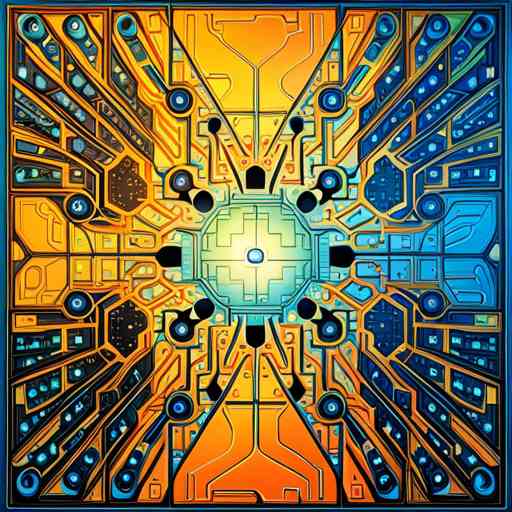Unraveling the AI Revolution: The Resurgence of Neural Networks
 Neural networks, the cornerstone of artificial intelligence (AI), are experiencing a renaissance. These clever systems, designed to imitate the human brain's inner workings, are now enhancing our lives in ways unimaginable just a few years ago. They help us navigate our cities, translate languages instantly, recommend movies to watch, diagnose diseases, and even drive our cars. But what exactly is driving this neural network renaissance? Let's dive in.
Neural networks, the cornerstone of artificial intelligence (AI), are experiencing a renaissance. These clever systems, designed to imitate the human brain's inner workings, are now enhancing our lives in ways unimaginable just a few years ago. They help us navigate our cities, translate languages instantly, recommend movies to watch, diagnose diseases, and even drive our cars. But what exactly is driving this neural network renaissance? Let's dive in.
Neural networks were born in the 1940s when scientists proposed models mimicking the human brain to perform complex calculations. However, the technology of the era was insufficient to fulfill this grand vision, and neural networks fell into a long period of relative dormancy. However, with the advent of modern computers and big data, these sleeping giants have awakened, propelling us into an exciting new era of technology and knowledge.
The revival was spearheaded by a subfield of AI called deep learning, which focuses on training large neural networks using massive amounts of data and computational power. The term 'deep' signifies the many layers of artificial neurons, or 'nodes,' in these networks. As a node processes information, it determines the importance of that information by weighting and passing it along to other nodes. This intricate, interconnected web is incredibly efficient at recognizing patterns and making predictions.
Two crucial ingredients have fueled this renaissance: an explosion of data and significant advancements in hardware. In the modern world, data is abundant and accessible. Every digital activity, from social media interactions to online shopping, generates data. These massive datasets provide the essential raw material for training neural networks, allowing them to learn patterns and improve their performance over time.
Simultaneously, advancements in computer hardware, particularly graphics processing units (GPUs), have enabled faster, more efficient computation. GPUs are exceptionally good at handling the type of parallel processing required for training neural networks. As a result, tasks that would have taken years to complete a decade ago can now be done in days or even hours.
Another significant aspect of the neural network renaissance is the adoption of open-source culture in AI research. Platforms like GitHub have made it possible for researchers around the world to share their code and collaborate on projects. This spirit of cooperation, combined with the proliferation of open-source machine learning libraries like TensorFlow and PyTorch, has democratized access to advanced AI tools and significantly accelerated progress in the field.
While we have already seen transformative applications of neural networks, this is only the beginning. Future applications could range from accurate real-time language translation to advanced health diagnostics and beyond. AI researchers are continually refining neural network architectures and training techniques to push the boundaries of what is possible.
As this neural network renaissance continues, it brings with it both exciting opportunities and profound challenges. Issues like privacy, job automation, and the need for regulations are just as important as the technological advancements driving this rebirth. It's an era of unprecedented innovation and exploration, and we are privileged to be a part of it. As we navigate this complex landscape, we must strive to harness the power of neural networks responsibly, with an eye towards benefiting all of humanity.